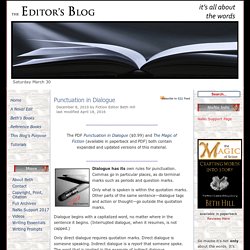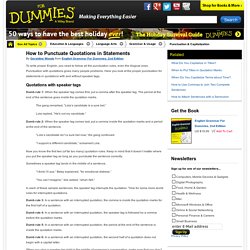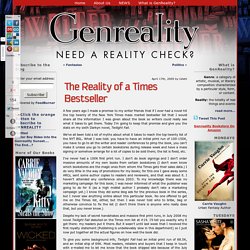

Let's Get Together to Discuss AD 33 by Ted Dekker - 'The Shack' Book Club (DMV) (Bowie, MD) January 29 · 7:30 PM AD 33 is the sequel to AD 30.

New York Times bestselling author Ted Dekker delivers the gripping story of Maviah, a slave who becomes a queen in Arabia, A.D. 33. They call her the Queen of the Outcasts. Maviah, a woman whose fate was sealed on her birth by this world-unwanted, illegitimate, female, a slave-subject to the whims of all. But then she met a man named Yeshua who opened her eyes.
Enter a story full of intrigue, heart-wrenching defeat, uncompromising love and staggering victory-one that re-examines everything you thought you knew about the heart of Jesus's stunning message and the power that follows for those who follow his easily forgotten way. How to Punctuate Dialogue. December 8, 2010 by Fiction Editor Beth Hill last modified April 18, 2016 The PDF Punctuation in Dialogue ($0.99) and The Magic of Fiction (available in paperback and PDF) both contain expanded and updated versions of this material.

Dialogue h as its own rules for punctuation. Rules for Comma Usage. Use a comma to separate the elements in a series (three or more things), including the last two.

"He hit the ball, dropped the bat, and ran to first base. " You may have learned that the comma before the "and" is unnecessary, which is fine if you're in control of things. However, there are situations in which, if you don't use this comma (especially when the list is complex or lengthy), these last two items in the list will try to glom together (like macaroni and cheese).
Using a comma between all the items in a series, including the last two, avoids this problem. This last comma—the one between the word "and" and the preceding word—is often called the serial comma or the Oxford comma. Use a comma + a little conjunction (and, but, for, nor, yet, or, so) to connect two independent clauses, as in "He hit the ball well, but he ran toward third base. " How to Punctuate Quotations in Statements. To write proper English, you need to follow all the punctuation rules, even the illogical ones.

Punctuation with quotations gives many people problems. Here you look at the proper punctuation for statements in quotations with and without speaker tags. Quotations with speaker tags Dumb rule 1: When the speaker tag comes first, put a comma after the speaker tag. The period at the end of the sentence goes inside the quotation marks.
The gang remarked, “Lola’s candidate is a sure bet.” Lola replied, “He's not my candidate.” Dumb rule 2: When the speaker tag comes last, put a comma inside the quotation marks and a period at the end of the sentence. “Lola’s candidate isn’t a sure bet now,” the gang continued. “I support a different candidate,” screamed Lola. Now you know the first two (of far too many) quotation rules. Sometimes a speaker tag lands in the middle of a sentence. “I think I’ll sue,” Betsy explained, “for emotional distress.” Create an MLA Website Citation for your Bibliography. The Reality of a Times Bestseller. A few years ago I made a promise to my writer friends that if I ever had a novel hit the top twenty of the New York Times mass market bestseller list that I would share all the information I was given about the book so writers could really see what it takes to get there.

Today I’m going to keep that promise and give you the stats on my sixth Darkyn novel, Twilight Fall. We’ve all been told a lot of myths about what it takes to reach the top twenty list of the NYT BSL. What I was told: you have to have an initial print run of 100-150K, you have to go to all the writer and reader conferences to pimp the book, you can’t make it unless you go to certain bookstores during release week and have a mass signing or somehow arrange for a lot of copies to be sold there; the list is fixed, etc. I’ve never had a 100K first print run. Despite my lack of secret handshakes and massive first print runs, in July 2008 my novel Twilight Fall debuted on the Times mm list at #19. Be Sociable, Share! Publish Your Book Today with iUniverse.